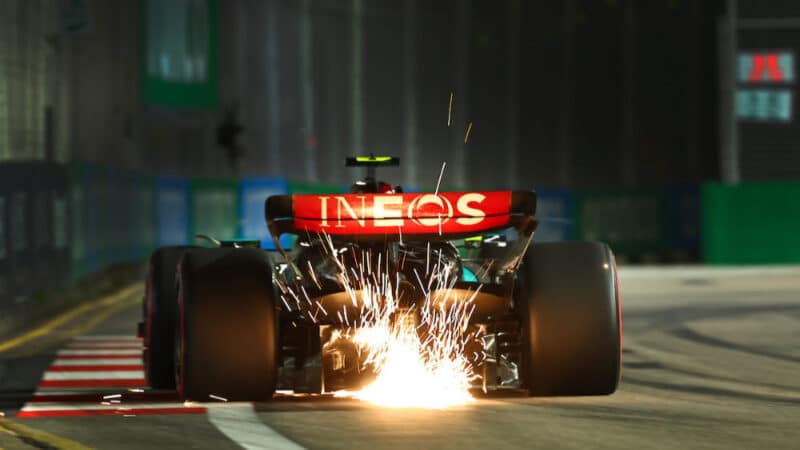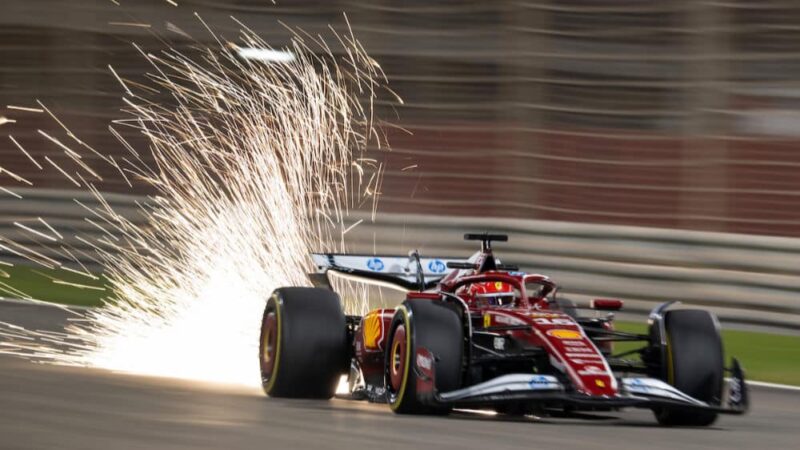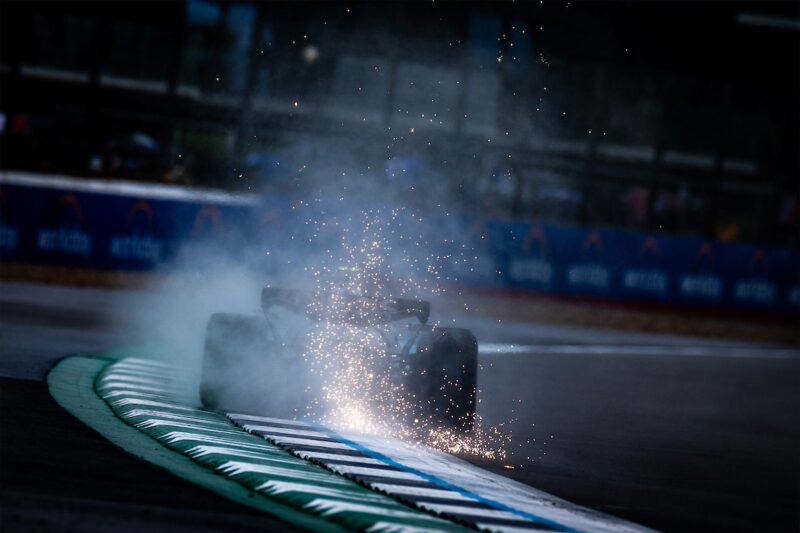Why do F1 cars spark on track?
The drama of Formula 1 is only heightened by the sparks that erupt regularly behind the cars. Why do F1 cars spark so much?

Sparks fly from Lewis Hamilton (Mercedes) during qualifying for the 2024 Singapore Grand Prix.
Grand Prix Photo
Among the captivating sights of F1 cars running at speed, the sparks flying from beneath them are one of the most striking, as they encapsulate the speed and dynamism of grand prix racing.
They have brought a dramatic accompaniment to battles from those of Nigel Mansell and Ayrton Senna in the early 1990s to Max Verstappen’s duels with Lewis Hamilton and Lando Norris in the current era.
Recently, sparks have also been responsible for heating up the action a little too much, with sparks from the cars igniting grass fires on the bone dry verges at Suzuka, during practice and qualifying sessions ahead of the 2025 Japanese Grand Prix.
But what makes F1 cars spark, and why do we see them so frequently?
Downforce and ride height
The aerodynamic design of F1 cars help them generate enormous amount of downforce – the force that pushes them to the track and that help them produce incredible speeds through corners. That, added to how low teams run their cars in order to maximise the ground effect, translates into having the underbody components running extremely close to the asphalt.
Sparks are produced when a car bottoms out, that is, when the suspension gives in enough to allow the car to touch the floor, hence producing the spectacular sparks.
The effect of the plank

Sparks fly from Charles Leclerc (Ferrari) during the 2025 pre-season test in Bahrain
Grand Prix Photo
In 1994, the FIA decided to introduce a rule that would make teams run a wooden plank underneath their cars to force them to run the cars are a certain ride height to reduce the aerodynamic effect of the floor, thus reducing cornering speeds.
That plank — now made of glass-reinforced plastic — is protected by titanium skid blocks which protrude about 3mm and that hit the track when the car bottoms out, producing sparks.
The amount of sparks produced varies depending on several factors including ride height and car weight.
Teams will run their cars lower or higher depending on the circuit they are racing and its conditions.
Street circuits like Monaco, where teams run high-downforce set-ups on asphalt that is far from smooth, tend to produce more sparks than high-speed circuits with smooth surfaces.
Similarly, cars tend to produce more cars when they are running on a heavier fuel load, particularly at the start of races, when it’s more common for them to bottom out.

Sparks fly from Lewis Hamilton (Mercedes) during wet qualifying for the 2024 British Grand Prix.
Grand Prix Photo
The plank’s wear is something that the FIA is always monitoring very closely and that has led to several disqualifications after some cars were found to have worn the plank more than the allowed 1mm.
A recent example of that was when Lewis Hamilton and Charles Leclerc were disqualified from the 2023 United States Grand Prix after failing the post-race plank inspection checks.
